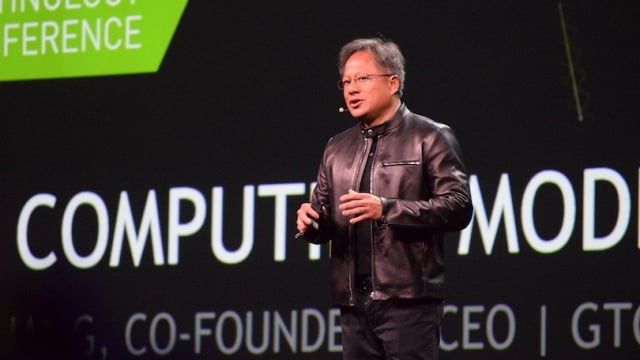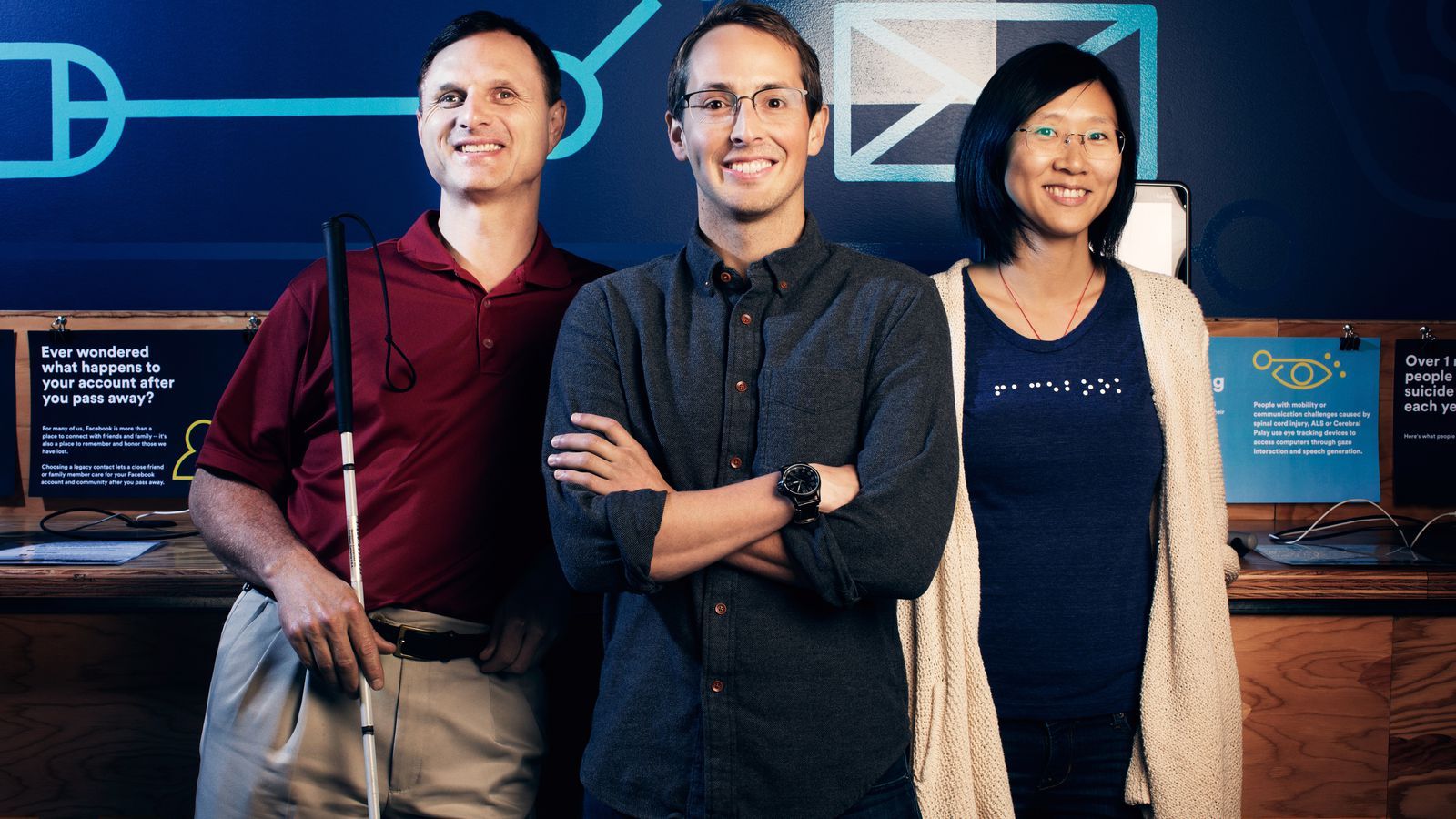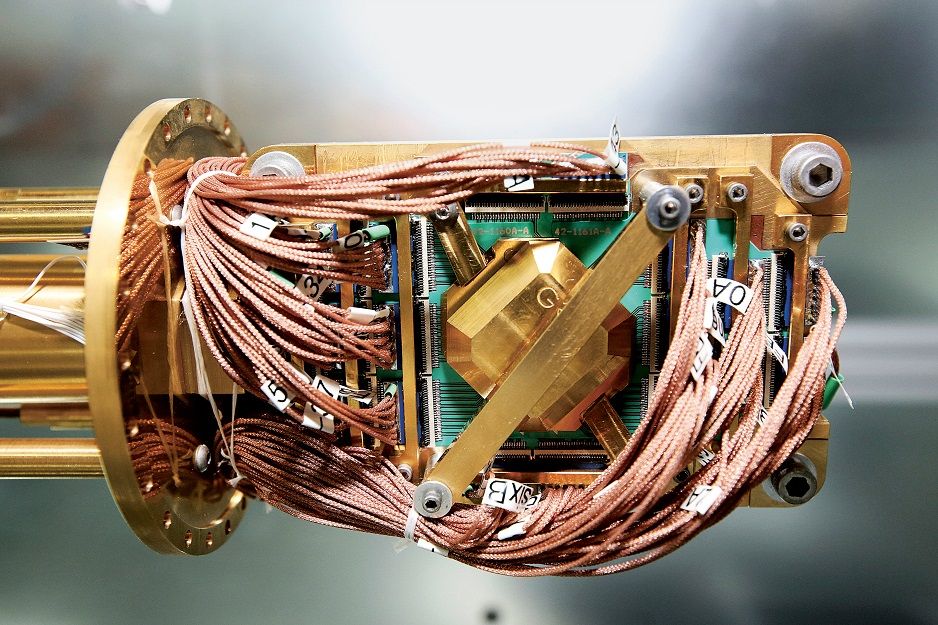Archive for the ‘information science’ category: Page 305
Apr 5, 2016
Facebook begins using artificial intelligence to describe photos to blind users
Posted by Shailesh Prasad in categories: food, information science, internet, mobile phones, robotics/AI, transportation
Ask a member of Facebook’s growth team what feature played the biggest role in getting the company to a billion daily users, and they’ll likely tell you it was photos. The endless stream of pictures, which users have been able to upload since 2005, a year after Facebook’s launch, makes the social network irresistible to a global audience. It’s difficult to imagine Facebook without photos. Yet for millions of blind and visually impaired people, that’s been the reality for over a decade.
Not anymore. Today Facebook will begin automatically describing the content of photos to blind and visually impaired users. Called “automatic alternative text,” the feature was created by Facebook’s 5-year-old accessibility team. Led by Jeff Wieland, a former user researcher in Facebook’s product group, the team previously built closed captioning for videos and implemented an option to increase the default font size on Facebook for iOS, a feature 10 percent of Facebook users take advantage of.
Automatic alt text, which is coming to iOS today and later to Android and the web, recognizes objects in photos using machine learning. Machine learning helps to build artificial intelligences by using algorithms to make predictions. If you show a piece of software enough pictures of a dog, for example, in time it will be able to identify a dog in a photograph. Automatic alt text identifies things in Facebook photos, then uses the iPhone’s VoiceOver feature to read descriptions of the photos out loud to users. While still in its early stages, the technology can reliably identify concepts in categories including transportation (“car,” “boat,” “airplane”), nature (“snow,” “ocean,” “sunset”), sports (“basketball court”), and food (“sushi”). The technology can also describe people (“baby,” “smiling,” beard”), and identify a selfie.
Continue reading “Facebook begins using artificial intelligence to describe photos to blind users” »
Apr 4, 2016
Quantum physics has just been found hiding in one of the most important mathematical models of all time
Posted by Andreas Matt in categories: information science, mathematics, particle physics, quantum physics, space
Game theory is a branch of mathematics that looks at how groups solve complex problems. The Schrödinger equation is the foundational equation of quantum mechanics — the area of physics focused on the smallest particles in the Universe. There’s no reason to expect one to have anything to do with the other.
But according to a team of French physicists, it’s possible to translate a huge number of problems in game theory into the language of quantum mechanics. In a new paper, they show that electrons and fish follow the exact same mathematics.
Schrödinger is famous in popular culture for his weird cat, but he’s famous to physicists for being the first to write down an equation that fully describes the weird things that happen when you try to do experiments on the fundamental constituents of matter. He realised that you can’t describe electrons or atoms or any of the other smallest pieces of the Universe as billiard balls that will be exactly where you expect them to be exactly when you expect them to be there.
Mar 30, 2016
Global championship of driverless cars
Posted by Klaus Baldauf in categories: information science, robotics/AI, transportation
Mar 29, 2016
Neuromorphic supercomputer has 16 million neurons
Posted by Klaus Baldauf in categories: information science, neuroscience, robotics/AI, supercomputing
Today, Lawrence Livermore National Lab (LLNL) and IBM announced the development of a new Scale-up Synaptic Supercomputer (NS16e) that highly integrates 16 TrueNorth Chips in a 4×4 array to deliver 16 million neurons and 256 million synapses. LLNL will also receive an end-to-end software ecosystem that consists of a simulator; a programming language; an integrated programming environment; a library of algorithms as well as applications; firmware; tools for composing neural networks for deep learning; a teaching curriculum; and cloud enablement.
The $1 million computer has 16 IBM microprocessors designed to mimic the way the brain works.
IBM says it will be five to seven years before TrueNorth sees widespread commercial use, but the Lawrence Livermore test is a big step in that direction.
Continue reading “Neuromorphic supercomputer has 16 million neurons” »
Mar 28, 2016
DARPA Announces Next Grand Challenge — Spectrum Collaboration Challenge
Posted by Karen Hurst in categories: information science, internet, military, mobile phones, robotics/AI
DARPA’s new “Spectrum Collaboration Challenge” with a $2million prize for who can motivate a machine learning approach to dynamically sharing the RF Spectrum.
WASHINGTON, March 28, 2016 /PRNewswire-iReach/ — On March 23rd, 2016 DARPA announced its next Grand Challenge at the International Wireless Conference Expo in Las Vegas, Nevada. Program Manager, Paul Tilghman of DARPA’s Microsystems Technology Office (MTO), made the announcement to industry leaders following the conferences Dynamic Spectrum Sharing Summit. The challenge will motivate a machine learning approach to dynamically sharing the RF Spectrum and has been named the “Spectrum Collaboration Challenge.” A top prize of $2million dollars has been announced.
While mostly transparent to the typical cell phone or Wi-Fi user, the problem of spectrum congestion has been a long standing issue for both the commercial sector and Department of Defense. The insatiable appetite for wireless connectivity over the last 30 years has grown at such a hurried pace that within the RF community the term spectrum scarcity has been coined. RF bandwidth, the number of frequencies available to communicate information over, is a relatively fixed resource, and advanced communication systems like LTE and military communications systems consume a lot of it. As spectrum planners prepare for the next big wave of connected devices, dubbed the Internet of Things, they wonder where they will find the spectrum bandwidth they need to support these billions of new devices. Equally challenging, is the military’s desire to connect every soldier on the battlefield, while using these very same frequencies.
Continue reading “DARPA Announces Next Grand Challenge — Spectrum Collaboration Challenge” »
Mar 26, 2016
Space Innovation Congress
Posted by Karen Hurst in categories: biotech/medical, food, government, information science, satellites
The is a Space Technology Conference and Exhibition, taking place in London on 7–8 April 2016. It is set to showcase the most cutting edge technologies and uses of Space Technology providing insight from over 50 speakers sharing their unparalleled industry knowledge and real-life experiences.
This year’s Space Innovation Congress will be highlighting the most innovative advancements in Space technology and will look at how these are being applied to many industry verticals from farming to banking, and the practical case studies that are coming out of these projects.
With user cases with dedicated tracks covering the entire Space exploration and Earth observation ecosystems: Satellites, Big data, Crop monitoring, Space debris, Maritime surveillance, Space weather and its impact on banking systems, Biomedical, Commercial space collaboration and Telecoms.
Mar 24, 2016
Quantum computing breakthrough paves way for ultra-powerful machines
Posted by Andreas Matt in categories: computing, information science, quantum physics
A crucial hurdle in the development of ultra-powerful quantum computers has been overcome through the development of the world’s first programmable system that can be scaled.
Researchers at the University of Maryland College Park built a quantum computer module that can be linked to other modules to perform simultaneous quantum algorithms.
“Quantum computers can solve certain problems more efficiently than any possible conventional computer,” states a paper published this week that details the researchers’ findings. “Small quantum algorithms have been demonstrated in multiple quantum computing platforms, many specifically tailored to hardware to implement a particular algorithm or execute a limited number of computational paths.
Continue reading “Quantum computing breakthrough paves way for ultra-powerful machines” »
Mar 21, 2016
Treating disease at stage zero
Posted by Klaus Baldauf in categories: bioengineering, biotech/medical, health, information science, nanotechnology
It sounds really obvious, but hospitals aren’t for healthy people. The world’s entire health system is really there to react once people get ill. If doctors are able to catch an illness at stage one that’s great, but if it reaches stage three or four there’s often not that much that can be done. So what if we could treat patients at stage zero and predict the likelihood of contracting diseases? We could then get treatment to people who need it much earlier and take preventative steps to avoid illness altogether.
Currently, when we think of monitoring in healthcare we’re usually referring to monitoring patients’ reactions to drugs or treatments, but this is changing. No amateur runner’s uniform is complete these days without a Fitbit or some kind of analytics tool to monitor progress, so the idea of monitoring the healthy is becoming ingrained in the public’s consciousness. But Fitbits only scrape the surface of what we can do. What if the data from fitness trackers could be combined with medical records, census data and the details of supermarket loyalty cards to predict the likelihood of contracting a particular disease?
With big data we can move from reacting to predicting, but how do we move beyond just making predictions; how do we prevent disease from occurring altogether? Up until now all of our monitoring technology has been located outside of the body, but nano-sized entities made of DNA could one day patrol the body, only acting when they come into contact with specific cells – cancer cells, for example. The technology that would turn tiny machines – roughly the size of a virus – into molecular delivery trucks that transport medication is already being worked on by bioengineers. If this kind of technology can be used to treat cancer, without needing to release toxic agents into the body, can the same technology be inserted into a healthy person and lie in wait for the opportunity to fight disease on its host’s behalf?
Mar 18, 2016
New quantum computer device takes advantage of a loophole in causality
Posted by Shailesh Prasad in categories: computing, information science, mobile phones, quantum physics
Researchers in Finland have figured out a way to reliably make quantum computers — technology that’s tipped to revolutionise computing in the coming years — even more powerful. And all they had to do was throw common sense out the window.
You’re almost certainly reading this article on a classical computer — which includes all phones, laptops, and tablets — meaning that your computer can only ever do one thing at a time. It reads one bit, then the next bit, then the next bit, and so on. The reading is lightning fast and combines millions or billions or trillions of bits to give you what you want, but the bits are always read and used in order.
So if your computer searches for the solution to a problem, it tries one answer (a particular batch of ones and zeros), checks how far the result is from the goal, tries another answer (a different batch), and repeats. For complicated problems, that process can take an incredibly long time. Sometimes, that’s good. Very clever multiplication secures your bank account, and faster or more efficient equation-solvers put that in jeopardy.
Continue reading “New quantum computer device takes advantage of a loophole in causality” »

















